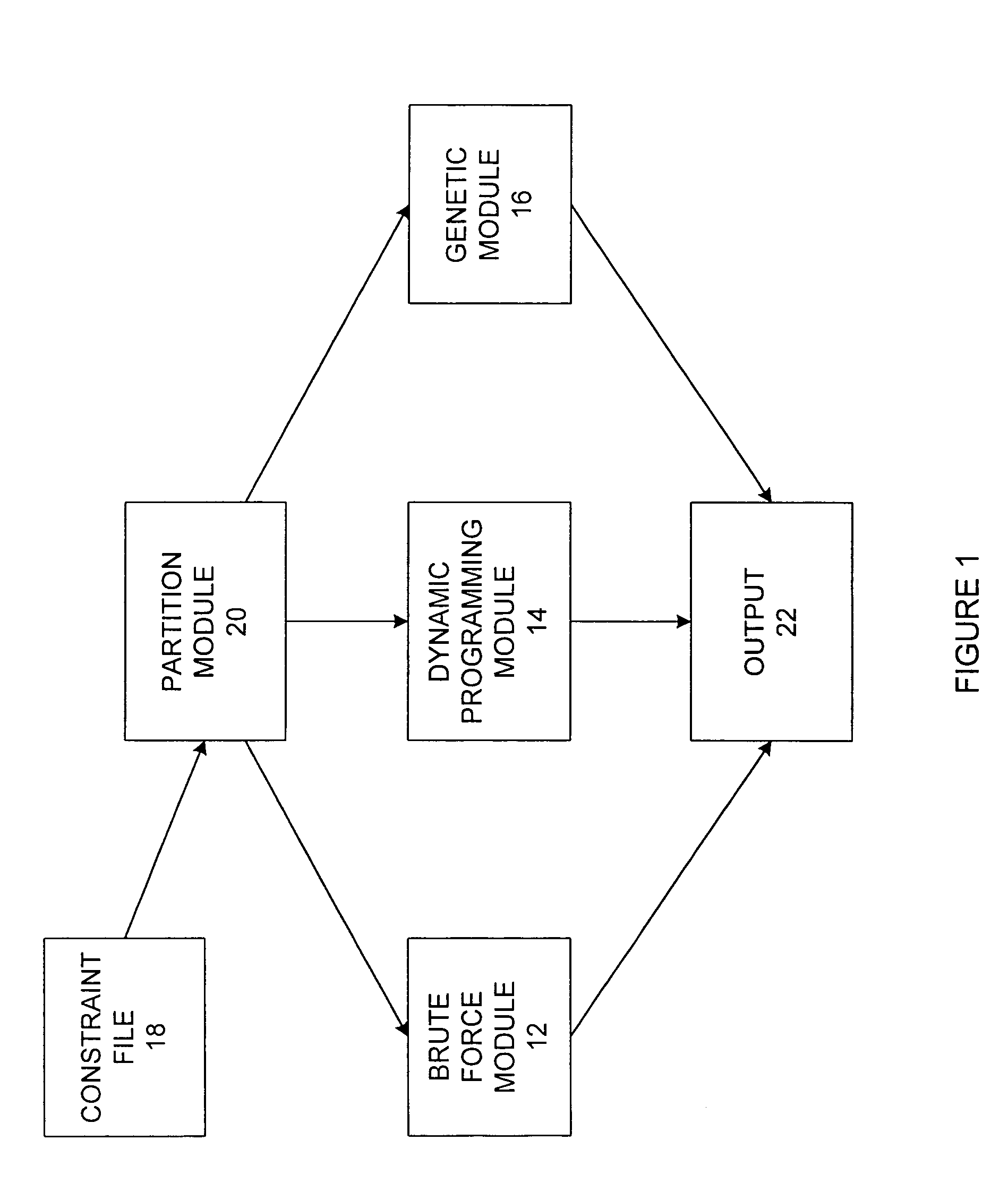System for scheduling multiple time dependent events
a scheduling system and event technology, applied in the field of scheduling multiple events, can solve the problem that the requirements cannot be met for any tdtsp with more than a few dozen cities, and achieve the effect of significant memory savings and reducing the amount of cpu tim
- Summary
- Abstract
- Description
- Claims
- Application Information
AI Technical Summary
Benefits of technology
Problems solved by technology
Method used
Image
Examples
Embodiment Construction
[0028]In the following description, like reference characters designate like or corresponding parts in the schematic of the invention. Also in the following description, it is to be understood that any such terms as “forward,”“rearward,”“left,”“right,”“upwardly,”“downwardly,” and the like are words of convenience and are not to be construed as limiting terms.
[0029]Referring now to FIG. 1, it will be understood that the illustration is for the purpose of describing a preferred embodiment of the invention and is not intended to limit the invention thereto. As best seen in FIG. 1, the scheduling system 10 includes a brute force module 12, a dynamic programming module 14, and a genetic module 16. A user-defined constraint file 18 is down loaded into the partition module 20, which then evaluates the constraints and selects the module that is most suited to create the best schedule in the amount of time allowed by the user. The selected module then solves the problem, yielding an output 2...
PUM
 Login to View More
Login to View More Abstract
Description
Claims
Application Information
 Login to View More
Login to View More - R&D
- Intellectual Property
- Life Sciences
- Materials
- Tech Scout
- Unparalleled Data Quality
- Higher Quality Content
- 60% Fewer Hallucinations
Browse by: Latest US Patents, China's latest patents, Technical Efficacy Thesaurus, Application Domain, Technology Topic, Popular Technical Reports.
© 2025 PatSnap. All rights reserved.Legal|Privacy policy|Modern Slavery Act Transparency Statement|Sitemap|About US| Contact US: help@patsnap.com



